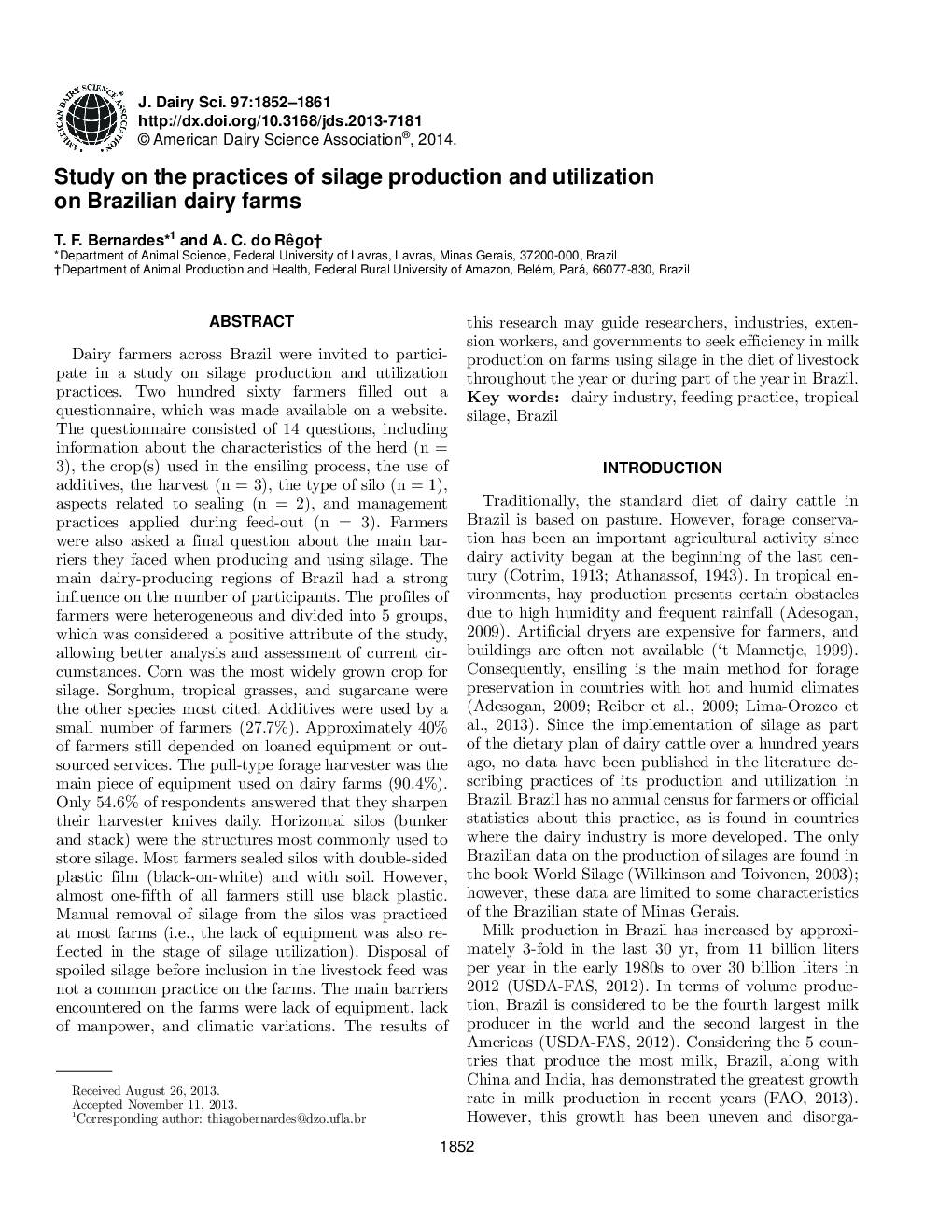| Article ID | Journal | Published Year | Pages | File Type |
|---|---|---|---|---|
| 10975213 | Journal of Dairy Science | 2014 | 10 Pages |
Abstract
Dairy farmers across Brazil were invited to participate in a study on silage production and utilization practices. Two hundred sixty farmers filled out a questionnaire, which was made available on a website. The questionnaire consisted of 14 questions, including information about the characteristics of the herd (n = 3), the crop(s) used in the ensiling process, the use of additives, the harvest (n = 3), the type of silo (n = 1), aspects related to sealing (n = 2), and management practices applied during feed-out (n = 3). Farmers were also asked a final question about the main barriers they faced when producing and using silage. The main dairy-producing regions of Brazil had a strong influence on the number of participants. The profiles of farmers were heterogeneous and divided into 5 groups, which was considered a positive attribute of the study, allowing better analysis and assessment of current circumstances. Corn was the most widely grown crop for silage. Sorghum, tropical grasses, and sugarcane were the other species most cited. Additives were used by a small number of farmers (27.7%). Approximately 40% of farmers still depended on loaned equipment or outsourced services. The pull-type forage harvester was the main piece of equipment used on dairy farms (90.4%). Only 54.6% of respondents answered that they sharpen their harvester knives daily. Horizontal silos (bunker and stack) were the structures most commonly used to store silage. Most farmers sealed silos with double-sided plastic film (black-on-white) and with soil. However, almost one-fifth of all farmers still use black plastic. Manual removal of silage from the silos was practiced at most farms (i.e., the lack of equipment was also reflected in the stage of silage utilization). Disposal of spoiled silage before inclusion in the livestock feed was not a common practice on the farms. The main barriers encountered on the farms were lack of equipment, lack of manpower, and climatic variations. The results of this research may guide researchers, industries, extension workers, and governments to seek efficiency in milk production on farms using silage in the diet of livestock throughout the year or during part of the year in Brazil.
Keywords
Related Topics
Life Sciences
Agricultural and Biological Sciences
Animal Science and Zoology
Authors
T.F. Bernardes, A.C. do Rêgo,
